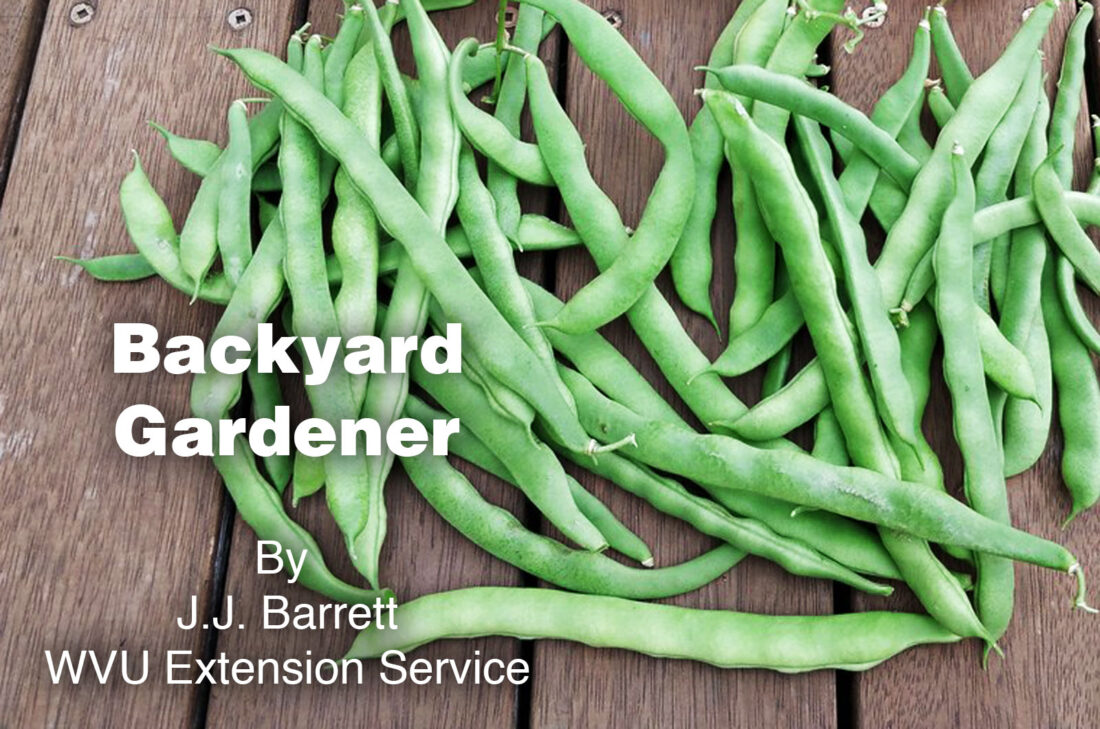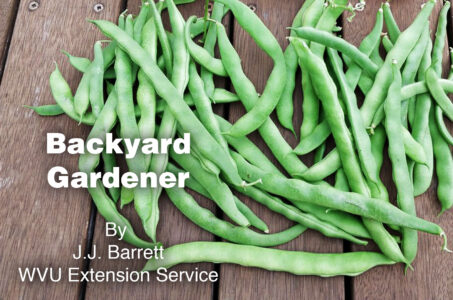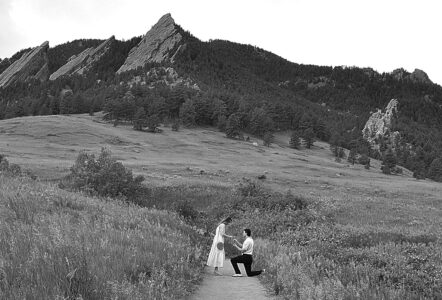Backyard Gardener: Heritage beans for summer gardening

Photo Illustration - Backyard Gardener - MetroCreativeConnection - JJ Barrett)
Hello Mid-Ohio Valley farmers and gardeners! This week I want to talk about an Appalachian favorite, the pole bean. This vegetable has been widely grown in home gardens across our area for hundreds of years. West Virginia has several unique, heritage bean varieties of both pole and half-runner types that can be grown and saved by gardeners and commercial growers.
Beans are a tender crop, so they are usually planted after the last frost date. Do not plant beans before the soil temperature is at least 60 degrees. Plant in intervals of 10 to 14 days to have a continuous supply. Plant beans in full sun in fertile, well-drained soil. It is important to select varieties that are resistant to common bean diseases such as mosaic virus and anthracnose.
Gardeners can easily plant a crop of beans now and a final crop two weeks from now to harvest pole and half runner beans into late summer.
I get a lot of questions about fertilizing beans. My advice is take it easy on the nitrogen. Beans are in the legume family, so they can “fix” nitrogen from the atmosphere. Therefore, they do not need high nitrogen supplementation.
Actually, too much nitrogen fertilizer can create excessive plant growth and can hinder flowering and seed production. A general recommendation for beans is to add 5 pounds of 5-10-15 fertilizer per 100-foot row at planting and again four weeks after seeding.
Pole beans will take a little extra work, but are extremely productive. They will require trellising and can be hand-harvested for a couple months. A standard vertical mesh trellis 6 to 7 feet high is a typical trellis, although WVU is currently investigating “slant-arm” trellises for easier harvest.
Many heirloom or heritage varieties of beans are not available at the local grocery store and must be grown on local farms here in West Virginia. If you cannot find a local source, you can grow your own. Heritage vegetables have a place in gardening and horticulture that is just as important as commercial or hybrid varieties. There are many heritage pole beans which are high yielding and resistant to disease.
Where can I get heritage bean seeds? The Southern Exposure Seed Savers, Sustainable Mountain Agriculture Center in Kentucky and Baker Creek Heirlooms are just a few sources. Dr. Jett at WVU has several heritage varieties of seeds available as well.
Since 2016, WVU Extension Service Horticulture Specialist Dr. Lewis Jett has evaluated heirloom or heritage beans for commercial production.
Compared to half runners, pole beans have a slightly larger pod and a more prominent string. For fresh market, “Coal Camp” and “Fat Man” are excellent pole bean varieties. For dry, shelled beans, the “October Tender Hull,” “Turkey Craw,” “Coal Camp” and “Fat Man” are excellent varieties.
Varieties that are separated by 20 to 25 feet can be saved for seed the following year. The seed must be thoroughly dried and placed in a cool, low humidity storage space.
Plant beans in rows spaced 2 to 3 feet apart with the seed spaced 2 to 4 inches apart in the row. They can also be planted in a 4-foot-wide bed with two rows that are 18 inches apart. All beans should be planted 1 inch deep. It is best to use treated seed to help prevent seed rot, especially when seeds are planted early when the soil is cool.
Beans have both a taproot and small shallow roots, so it is important not to cultivate near the plant. Proper plant spacing will typically reduce weeds after a few weeks of plant growth. Beans can be mulched to reduce weed competition.
During hot weather when temperatures are above 90 degrees, blossom drop may be a problem, especially for snap bean varieties such as Blue Lake 274. The plants will usually start setting more pods when the daily temperatures become cooler. Common diseases include root rot, rust and gray mold.
Most green bean varieties will mature in 45-60 days. Snap beans destined to be steamed, stir-fried or even eaten raw may be harvested when tender before beans fully mature. Filet beans are slender varieties designed to be harvested with little bean development.
Snap beans which are to be canned or frozen are generally harvested when the pods are still tender, but the beans have started to develop inside. Waiting too long increases the fiber content and decreases the flavor of the beans. Once snap beans bloom, most plants will have beans two weeks from flowering.
Daily harvest increases production and ensures that beans don’t get too mature before harvest. Once picked, snap beans should be processed or refrigerated within a few hours or quality may decline.
Heritage beans are versatile beans that can be eaten fresh, shelled fresh or even shelled as a dry bean. Compared with a generic snap bean, heritage beans have more fiber and protein per serving. Half-runner and pole beans must be strung and tipped before cooking, canning or freezing.
Many pole and half-runner bean types have been selected and saved in West Virginia and other regions in Appalachia. Preserving these varieties for the future generations is vital to our history, heritage and for food production in general.
Contact me with questions at the WVU Extension Office at 304 424 1960 or at jj.barrett@mail.wvu.edu. Until next time, Good Luck and Happy Gardening!






